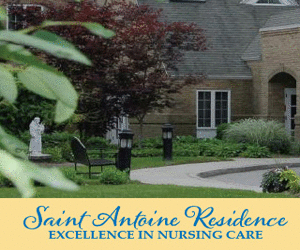
Kallman seeks to tackle housing costs and climate crisis with transit-oriented development
STATE HOUSE – To Sen. Meghan Kallman, a crucial part of making Rhode Island more affordable and livable is understanding how different problems are interconnected. One such example is how the housing and transportation systems in Rhode Island work together.
“Rhode Island has a crisis of housing affordability, roads crumbling, climate change; it’s all connected. We can build more housing people can afford, have less traffic and reduce our emissions by building smart, dense development around transit hubs,” said Senator Kallman (D-Dist. 15, Pawtucket, Providence).
She is sponsoring a bill (2023-S 0800) that would establish a transit-oriented development program to work in concert with the state’s Transit Forward 2040 master plan. The master plan sets out steps to build a modern, efficient public transportation system throughout the state by 2040. Part of the plan is focusing development around “regional transit hubs” like Kennedy Plaza and Wickford Junction as well as “frequent transit” stops where buses would run every fifteen minutes.
The legislation would require that land within a quarter mile of “regional transit hubs” and within one-eighth of a mile of “frequent transit stops” be designated as transit-oriented development districts. Developable land in such districts would be permitted for mixed-use development with a residential density of at least ten units per acre. There would be exceptions for open spaces, and municipalities would have final say on approving projects as well as choices around where to concentrate density.
Advocates say dense development around transit hubs solves many problems at once. By increasing the supply of housing, it relieves pressure on housing prices and helps people afford homes. By concentrating that housing in small, dense districts, it lessens development pressure on open spaces and creates walkable, interconnected neighborhoods. And by putting that density near transit hubs, it reduces the number of cars on the road, meaning less traffic, fewer potholes, less carbon emissions and healthier kids.
Transportation represents nearly 40% of the state’s greenhouse gas emissions. About 10% of children in Rhode Island children have asthma and research has found tailpipe emissions are responsible for about 13% of childhood asthma cases.
“The problems are complicated, but the plan is simple: more housing people can afford around transit hubs,” said Brenda Clement, director of HousingWorks RI. “That means more supply of housing, preserving open spaces and residential neighborhoods, less cars on the road, less traffic, less potholes, cleaner air and lower emissions. It’s exactly the kind of development we should be doing.”
The bill would fund these programs through a surcharge on vehicles over 3,500 lbs., which would include most trucks and SUVs, of between $175 and $500 per year. Advocates point out that heavy vehicles cause more damage to roads, which taxpayers, including those who don’t drive or who drive lighter, less-damaging vehicles, then must pay for. The research nonprofit TRIP found that driving on deteriorated roads costs Rhode Island motorists $833 per driver per year in increased vehicle repair and operating costs.
In the House, Rep. Leonela Felix (D-Dist. 61, Pawtucket) has introduced separate but similar legislation (2023-H 6084) that would create a transit-oriented development pilot program. The bill is part of House Speaker K. Joseph Shekarchi’s (D-Dist. 23, Warwick) 14-bill package to address Rhode Island’s housing crisis.
Senator Kallman says transit-oriented development is already producing dividends in Rhode Island. She points to the 150-acre Conant Thread District around the Pawtucket-Central Falls Transit Center. Under a transit-oriented development plan, old mills in the district are being converted into mixed-use buildings with restaurants and hundreds of units of housing, all within walking distance of buses to Providence and trains to Boston. An additional 180-unit project was approved last week.
“We don’t have to look far to see what a bright future will look like,” said Senator Kallman. “Housing people can actually afford, great public transportation, preserved open spaces, less traffic and cleaner streets. We’re doing it right here in Pawtucket and Central Falls. Let’s take the model statewide.”











